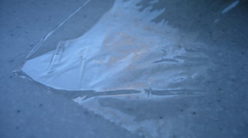[ad_1]
If you go to a good seafood restaurant these days you can count on shelling out – no pun intended – a substantial amount of money for a boiled or steamed lobster. Order it baked stuffed and you can add even MORE onto the tab. Lobsters cooked at home are such a better deal; why don’t more people take advantage of this and prepare and enjoy them at home?
The likely answer is that they are either loathe to “kill” the lobsters or don’t know how to break one down after cooking. I will address both of these issues in this two part series and I am sure that when you have finished reading you will be inspired to cook these delectable creatures at home and confident in your ability to get every last tasty nugget out of that shell!
When you are purchasing lobsters first seek out a place that sells lots of lobsters indicating rapid turnover. Check out the tank where you can see your potential dinner mates swimming about. You want a frisky, mobile lobster. Lobsters do not feed in the tanks and when they haven’t eaten in a while they get tired and their flesh shrinks inside their shells. The frisky ones are the newest in the tank and are thus the freshest and freshness is paramount for any shellfish. A freshly caught lobster’s tail should snap back when you uncurl it, have a hard thick shell and nice long antennae. Don’t expect to see bright red lobsters in a tank! They only turn red when they have been cooked. Most lobsters are dark green, black, brown or even white.
Your lobster should be heavy for his size indicating that he is an “honest lobster”. When lobsters molt – typically in the summer – they shed their old shells and hide at the bottom of the ocean until their shells harden enough for them to be protected against their “friends” in the ocean. A lobster that has just molted won’t have completely grown to fill his shell. This doesn’t affect the quality of the meat but simply means that you can’t judge the amount of meat inside by looking at it. Have it weighed to get a good idea of your potential yield. Lobsters weighing a pound – the legal minimum – are called “chickens” and lobsters with only one claw are called “culls”. Culls can often cost less and are a great deal for when you want lobster meat. A one-pound lobster yields about 2/3 cup lobster meat although if you follow my directions below you are likely to get a bit more than that out of your crustacean. Try to purchase lobsters that are all around the same weight; this will make timing their cooking easier.
When you get your lobsters home, wrap them in wet newspaper. Do NOT put them in a bucket of water! Fresh water is lethal to lobsters. They need to be kept cool and moist since they are gill breathers and are used to the nice cold waters of the ocean. While they should be cooked the day they are bought you can keep them in the fridge overnight one night if they are layered with wet newspaper or, better yet, seaweed from the seafood market (ask for some when you buy your lobsters). Clean out one of those vegetable drawers; they make perfect temporary housing for your lobsters.
When it comes time to cook your lobsters you need to decide if you want to steam or boil them (there are many other preparation methods for these delicious shellfish but for the sake of simplicity I will talk only about steaming and boiling). Some people like steamed lobsters better because they don’t want their dinner to be “waterlogged”. The way I see it, the animal came out of the water in the first place so I just figure boiling is fine. I have had numerous steamed and boiled lobsters and have not really ever noticed much of a difference in the final results. People also claim that you can’t overcook a lobster with steaming but I haven’t found that to be true, either. Whichever way you choose, let’s talk about something else first.
Many people feel that dropping a lobster into boiling water, or steam – which is actually hotter than boiling water – is cruel. Other people claim that lobsters, from the arthropod family, having extremely simple nervous systems and ganglia as opposed to brains, do not have the capacity for pain. I haven’t seen any proof in my many years of eating lobsters that they are suffering upon their toasty demise but I also believe that it is always better to err on the side of humane treatment of any of our animal food sources. Some people believe that stroking a lobster’s belly or back will “hypnotize” the lobster, leading to a calm, mindless end. Again, I have seen no proof. If you are vehemently opposed to what comes next, you can stick your lobster in the freezer for a few minutes to “numb” him. Again, no proof. It is up to you to decide what you want to do but if you are adamantly, no holds barred, never-gonna-do-it opposed to cooking a live lobster, A) why are you reading this and B) you can purchase a device that apparently shocks the lobster to death within a few seconds as opposed to the few seconds or so it takes them to die in the boiling water or steam.
If you are boiling your lobster, prepare a large stockpot of water, salt it such that when you stick your finger in there and taste it – BEFORE it boils! – it tastes like seawater (about 2 TBS for every quart of water), and be sure you have a good fitting lid handy. Bring to a rolling boil. Grab your lobster behind the claws and drop him right into the boiling water head first. His tail will kick a couple times; that’s a reflex. Add your other lobsters, if you are cooking more than one, as long as there is space enough to get them in there without cramming. Place the lid on top and as soon as the water returns to a boil (peek to check), start timing. You will boil your lobster(s) for 10 minutes for the first pound and an extra three minutes for each additional pound (this is why it was important to get lobsters all weighing around the same amount). Lobsters that are fully cooked will be bright red, an antenna will come off when gently tugged, the flesh will be fully opaque and white, and the internal temperature is 180 F.
If you are steaming your lobster, insert your steaming rack into your pot, fill to the bottom of the rack with your salty water and bring to a rolling boil. Drop your lobsters into the pot as described above – always head first! – and cover the pot. When the water is again boiling, start timing. Steam for 14 minutes for the first pound and three extra minutes for each additional pound.
With steamed lobsters you will likely not have much water inside the shells. Pile them on the plates and serve! For boiled lobsters you can drain the water at the table when you first pull off the claws or tail or you can use your heavy-duty kitchen shears and snip off just the tips of the claws. Hold the lobster upside down over the cooking pot and drain off any water. Pile ’em up and call people to the table!
As far as serving, some people claim drawn butter is the way to go, others swear by clarified butter. In my opinion the best – and only – way to serve lobster is with lots and lots of melted salted butter. Plan on ¼ cup for each person and serve it in small cups so people can dip the whole piece of each delectable morsel all the way into the butter.
Read Part II to learn how to break your lobster down like a pro!
[ad_2]
Source by Brenda Crawshaw





